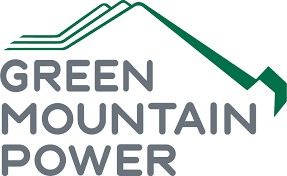This week’s Legislative Update is sponsored by:
March 27, 2020
One thing that is incredible about the Vermont State House is the overwhelming sense of history you feel in the Greek-revival style building which has served Vermonters for almost two centuries. This week certainly added to that history as 17 senators traveled to Montpelier Tuesday and 76 representatives made their way into the building on Wednesday to pass COVID-19 related bills, some of them donning masks and gloves while maintaining six feet of distance.
After the passage of the legislation by the Senate, President Pro Tem Tim Ashe told reporters, through microphones taped to hockey sticks, that moving forward “COVID-19 is not the top priority it is the only priority.” He noted that the session might need to go into the summer, and later clarified that it may go into the Fall.
The Senate President made clear on a call with the whole Senate Thursday that Senators’ priority legislation from before the crisis is not dead, they are just not a priority right now. This leaves room for conversations around Act 250 and other large legislative discussions that have been so easy to forget in the last three weeks to come back in the near future.
The traditional legislative session has become increasingly complex, with an endless barrage of new information coming in from local, state, and federal levels by the hour. State revenue projections are changing daily and the legislature needs to accommodate for changing federal programs and regulations at a pace beyond what we’ve seen before. It is going to be a long, difficult process, however, LCRCC’s advocacy team will be there every step of the way on behalf of our members and their employees.
You can read last Friday’s Update here if you missed it and in this week’s update:
- Understanding the Governor’s Stay Home Executive Order
- Federal Legislation Advanced This Week with Small Business Loans and More
- State Legislation Passed This Week
- Unemployment Insurance and Overlapping Federal and State Changes
- Personal and Business Tax Flexibility
- Financial Impacts on the State Still Being Understood
- The Laundry List
Federal Relief Package Webinar
We will be holding a webinar with the offices of Senators Leahy and Sanders and Congressman Welch to learn more about the federal relief package on Monday, March 30 at 2pm. Details on how to join the webinar will be sent to you once you register.
Governor’s Stay Home, Stay Safe Order
Tuesday night, the Governor issued an Executive Order. What existed before this order was layers of restrictions built upon each other to limit human contact and large group gatherings. With this order, the Governor in effect put a blanket prohibition on businesses operating and then layered on the exemption for things deemed essential. Somewhere close to 104,000 Vermonters are working at businesses deemed “essential” which are exempt from Scott’s order.
If you have a question as to if you should still operate; first, read the full text of the Governor’s Executive Order, then read the further guidance from the Agency of Commerce and Community Development, and then look at the in-depth spreadsheet of NAICS business codes list. Some businesses might also want to consult and cross-reference the Memorandum on Identification of Essential Critical Infrastructure Workers During COVID-19 Response.
If you still question the acceptability of the continuation of business operations, err on the side of public health, however, you can contact the Agency of Commerce and Community Development via this online Continuation of Operations Form.
Any business able to continue operations without in-person business operations may be able to continue operating in accordance with the CDC and Vermont Department of Health (VDH) guidelines.
If you are an essential business, you may want to contact your suppliers and service providers as necessary to make sure they understand that they are part of an essential business supply chain and can keep operating. If you are a supply chain participant or service provider, you may want to contact your customers to determine whether they are an essential business.
Federal Legislation Would Pump Billions into Vermont
On Wednesday, the U.S. Senate finalized and passed its third COVID-19 relief package S. 3548 The Coronavirus Aid, Relief, and Economic Security (CARES) Act. While we are all digesting the unprecedented 880-page, $2 trillion package, one thing is clear – it will go a long way to helping states recover from this unprecedented crisis. While the bill still needs to pass the House, the comprehensive aid package includes direct payments to Americans of up to $1,200 by April 6th, a dramatic expansion of unemployment insurance, and billions of dollars to state governments as well as small business assistance.
We will be holding a webinar with the offices of Senators Leahy and Sanders and Congressman Welch to learn more about the federal relief package on Monday, March 30 at 2:00 pm. Register here.
Big items in the bill:
Paycheck Protection Program – $350 billion in funding
The PPP would provide small businesses and other entities with zero-fee loans through the Small Business Administration (SBA) and the U.S. Department of Treasury of up to $10 million which can be used in coordination with other COVID-financing assistance established in the bill or any other existing SBA loan program. With these loans, principal and interest are deferred for up to a year and all borrower fees are waived and up to 8 weeks of average payroll and other costs will be forgiven if the business retains its employees and their salary levels.
Emergency Economic Injury Grants – $562 million for loans, $10 billion for grants
These SBA Economic Injury Disaster Loans (EIDL) may be used to pay for expenses that could have been met had the disaster not occurred, including payroll and other operating expenses. Better still, these EIDLs provide an advance of $10,000 to small businesses and nonprofits that administered within three days of applying for the loan. The EIDL grant does not need to be repaid, even if the grantee is subsequently denied an EIDL. The loans of up to $2 million that carry interest rates up to 3.75 percent for companies and up to 2.75 percent for nonprofits, as well as principal and interest deferment for up to 4 years.
Debt Relief for Existing and New SBA Borrowers – $17 billion in funding
Under this provision, SBA will cover all loan payments, including principal, interest, and fees, for existing SBA borrowers with standard SBA 7(a), 504, or microloans for six months. This relief will also be available to new borrowers who take out an SBA loan within six months after the President signs the bill.
Payroll Tax Credit For Employers
Employers who hold onto employees during the pandemic would be eligible for a refundable payroll tax credit of 50% credit that would offset the employer’s share of Social Security taxes up to $10,000 of qualified wages per employee. For eligible employers with fewer than 100 full-time employees, all employee wages qualify for the credit. For employers with more than 100 full-time employees, qualified wages are wages paid when they are not providing services due to COVID-19.
Student Loan Tax Credit
To alleviate the pressure of student loan costs during this crisis, tax relief encouraging employers to implement student loan repayment programs very similar to what LCRCC has been lobbying for was included. This provision will exclude up to $5,250 in qualifying student loan repayments paid by the employer on behalf of the employee from income for income tax purposes.
As we said, this bill is unprecedented and 880-pages, so we know there is more in this. We will continue to summarize this as details are confirmed.
What does it mean for the state coffers?
In total, Vermont is expected to receive around $2 billion as a result of this act. Included in that number is our portion of the $150 billion stabilization fund the act created, about $1.25 billion within the next 30-days to be applied to expenses between March 1st and the end of the year. This funding flexibility is still being understood as it is directed to “necessary expenditures incurred due to COVID-19.” While it is still unclear exactly how much of the education stabilization fund Vermont will be allocated, initial estimates are close to an additional $25-28 million for higher education and $26-27 million for elementary and secondary education.
Much of the other assistance is funneled through pre-existing programs and will not require legislative action at the state level – of this pot of money, Vermont is expected to receive;
- $5.4 million to support public health preparedness and response activities through the Centers for Disease Control;
- $4.7 million in Community Development Block Grant (CDBG) funding to support the expansion of community health facilities, child care centers, food banks, and senior services;
- $5 million in Community Service Block Grants to address the consequences of increasing unemployed and economic disruption;
- $4.3 million in Child Care Development Block Grants to support child care assistance to health care sector employees, emergency responders, sanitation workers, and other works deemed essential during the coronavirus response;
- $4.6 million for housing assistance grants through the Department of Housing and Urban Development;
- $4.1 million in the Low Income Home Energy Assistance Program (LIHEAP);
- $20 million to support public transportation emergency relief;
- $9.6 million to support the state’s airports;
- $3 million in election assistance grants;
- $2 million to support state and local law enforcement and corrections through the Byrne-Justice Assistance Grant (JAG) program;
- $826,000 through the National Endowment for the Arts and the National Endowment for the Humanities to support museums, libraries, and other organizations that have been forced to shut their doors due to the virus;
- $175,000 to support small- and medium-sized manufacturers recover from the economic impacts of COVID-19 through the Manufacturing Extension Partnership program; and
- $862,000 in Emergency Preparedness Grants through the Federal Emergency Management Administration (FEMA).
A user-friendly overview of the bill by the National Council of State Legislators can be found here.
Businesses looking to apply for SBA loans should visit SBA.gov. Information on these new loans will be available there as soon as possible.
State Legislation in Response to COVID-19
This week key pieces of legislation passed both bodies of the Vermont legislature and are on their way to the Governor. Among that legislation were bills H.681 and H.742 we discussed in last week’s legislative update. Given the massive stimulus contained in CARES Act, it may be prudent for the Governor to hold off on signing legislation passed this week until after the President signs the legislation and restrictions on using the use of federal money is understood.
H.742 is a comprehensive health care bill that contains measures to help hospitals handle COVID-19 including an expansion of telemedicine and loosening restrictions to allow recently retired healthcare workers to practice. H.742 also amended unemployment law to provides benefits and relief for individuals who voluntarily leave their jobs to self-isolate, have COVID-19, ordered quarantine at the direction of health care provider or other authority, those who need to care for a sick family member, and those who need to care for a child in addition to those laid off because of COVID-19.
H.681 originally was the vehicle for changes to unemployment laws, however, it was amended to contain instead amendments made for elections laws, open meeting laws, fish and wildlife meetings, and deadlines for municipal planning.
Among the other items passed were;
H.R. 16, declaring state of emergency until May 1, 2020;
H.R. 17, temporarily allowing House committee members to vote remotely during the COVID-19 emergency.
H.R. 18 – allows remote participation for members for voting and debate and will take effect if three-quarters of members are voting. This rule would expire in the next biennium or at the end of the declared emergency.
J.R.S. 48 – allowing joint rule committees can allow any joint committees of the legislature may meet and vote electronically
Unemployment Insurance
As we are all well aware, Vermont is suffering. Last week alone, over 14,667 Vermonters filed for unemployment and we can expect to see even more next week when numbers are released. When we look at this in the context of the 2,000 at the peak of the 2008 recession, which we’ve used as the high-watermark on our unemployment trust fund, that this news is particularly troubling.
As we reported last week, Vermont’s unemployment trust fund has $500 million in it and is in better condition than many other states. However, in a hearing yesterday, the Commissioner of the Department of Labor told the Senate Committee on Economic Development, Housing, and General Affairs that if Vermont ends up with 20% unemployment, the state will probably have enough money in its unemployment trust fund to pay benefits for about 19 weeks after which time the state will need to borrow money from the federal government.
There is a potential problem at the confluence of the federal CARES Act and Vermont’s recently passed legislation on unemployment insurance. Legislation passed this week (see above state legislation section) creates a broad ability for employees to leave employment and receive the unemployment benefit while CARES adds an additional $600 dollars on top of what our state delivers as an unemployment benefit. The maximum payout for Vermont’s unemployment is $513 and an employee can collect 50% of their income with a statutory cap of $513 a week. The result is a situation in which a person may make more money leaving their current employment and taking the UI benefit, thus creating an incentive for individuals in businesses deemed essential to leave the workforce.
An important note; under both the federal and state laws recently passed, an employer shall provide an individual with notification of the availability of unemployment compensation at the time of the individual’s separation from employment. The notification may be based on the model notification language provided by the U.S. Secretary of Labor.
Business and Personal Taxes
Dates for personal income, corporate income, and fiduciary taxes, as well as, the Vermont homestead declaration and property tax credit claim have been pushed back until July 15th. These all happened by virtue of Vermont law because the IRS moved its due dates. Vermont’s Department of Taxes had decided to waive penalties, fees, and interest until that date, however, once the IRS moved the date it made it final.
The Department is suggesting that you file if you think you will receive a refund, as they are still processing refund checks and sending them to Vermonters to help. If you want to file, they are asking you to do so electronically
Rooms and Meals Tax | Sales and Use Taxes
You probably already saw on Tuesday that the Governor directed the Commissioner of the Department of Taxes to waive penalties, fees, and interest on meals and rooms as well as sales tax due from February and March (March 25th and April 25th filing deadline) in an attempt to ease the burden on businesses suffering financially from this crisis. This is not cancelation of these taxes moving forward, an abatement, or blanket extension of the due date. This is simply a grace period.
The Department is asking that you file the return if you can as the state is facing revenue downturns. If you cannot pay right now, they are asking you to file without making the payment as this will provide useful information to the state to deal with this crisis.
Read the Department’s Frequently Asked Questions for more information.
While many would like to see these taxes abated, that is not within the authority of the Commissioner of the Department of Taxes. These taxes are trust taxes in which businesses collect and hold the tax before remitting on behalf of a consumer. Because of that, abatement will need to be a decision by the legislature. LCRCC supports the concept of abatement for the following reasons:
- First, this action can immediately be delivered to our state’s small businesses in need of liquidity to pay bills, keep employees on the payroll, or pay sick leave;
- Second, such action would be less burdensome to administer than any potential program businesses would need to apply for to be delivered relief; and
- Third, this relief is proportional to each business’s economic footprint creating an intrinsic level of equity.
Again, a closing note on our tax section: the Department is asking that you file to help the state which is facing revenue downturns. If you cannot pay trust taxes right now, you may still file without making the payment and this will provide useful information to the state to deal with this crisis. Additionally, the Vermont Department of Taxes is asking that all business be conducted online.
Fiscal Impacts Still Not Fully Understood
The Senate Finance Committee received a situation report from the Department of Finance and Management Commissioner Adam Greshin that the projected loss in revenue has decreased $60 million in the past two days. As we reported last week, Vermont currently has a robust $228 million in reserves, which can be used to handle cash flow issues until delayed tax revenues or federal dollars enter state accounts. It is not just revenue reductions, it’s an issue of cash flow for the state, as the House Ways and Means Committee heard this week as money the state might have had on April 15th will now not come until July 15th.
The state might be forced to shorten its budgeting cycle to fund the state at six or four-month increments as it gains an understanding and adjusts to incoming money from state taxes or federal stimulus.
Laundry List
- LCRCC’s Resource Guide can be found here.
- ACCD is still interested in hearing from all Vermont businesses impacted by the response to the COVID-19 virus. Please continue to share these impacts via the Agency Business Impact Form, which will help assess the full impact as we work toward solutions.
- To apply online for SBA Loans visit this site. Businesses are strongly encouraged to seek professional business counseling and technical assistance before taking on additional debt. Vermont has a robust business technical assistance provider network. More information about these resources can be found online here.
- The Vermont Secretary of State is working on methods for remote notary which could be helpful to businesses in the age of social distancing.
- Public WiFi –The Department received assistance from libraries, schools and municipal governments in creating the map, as well as support from the Agency of Digital Services, the Department of Libraries, the Agency of Commerce & Community Development, the Agency of Education, the Vermont Center for Geographic Information and the Department of Health. The map can be found here. Additional connectivity resources can be found here.
House Government Operations passed a bill, S.47, out of committee, 8-3, that aims to bring more transparency to political action committees that operate in Vermont.
Concerned or need to learn more about anything in this newsletter? Email our team at [email protected].
We look forward to working with you this session.
Sincerely,
The Lake Champlain Chamber Advocacy Team



